THE SEA
Llanes is well known because of its coast: 30 fascinating beaches that stretch along the Llanisca coast. Whether large or small, sandy or rocky, urban or natural, open or narrow… they are all charm in a unique way.
From Gulpiyuri to the Pría Blowholes
The seaside area of the natural environment of Nueva de Llanes leaves no one indifferent, due to its singularity and beauty. Some of the places of interest are:
- The Pría Blowholes, that are part of the protected landscape of the Asturian coast; they are located about 4 km from the Hotel Rural Ovio, in the village of Llames de Pría.
- Natural beaches and coves of great beauty that are perfectly preserved, such as the beaches of San Antonio and Cuevas del Mar.
- The Gulpiyuri beach, a spectacular beach in a unique spot!
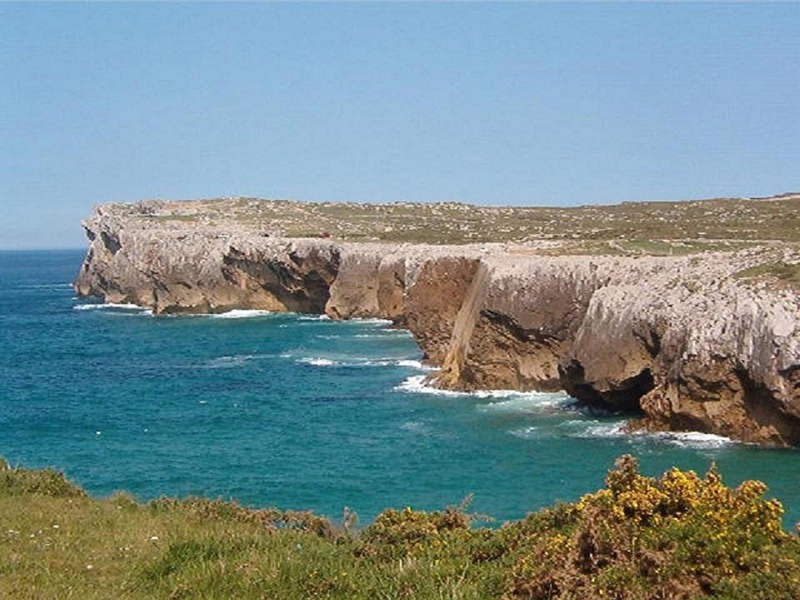
The Pría Blowholes
What are the Pría blowholes? These vertical holes are formed at the edge of a limestone cliff that communicates with the sea. When the tide rises, the waves beat with force firing upwards a water spray, which produces a peculiar sound. This water column can reach 10 m high.
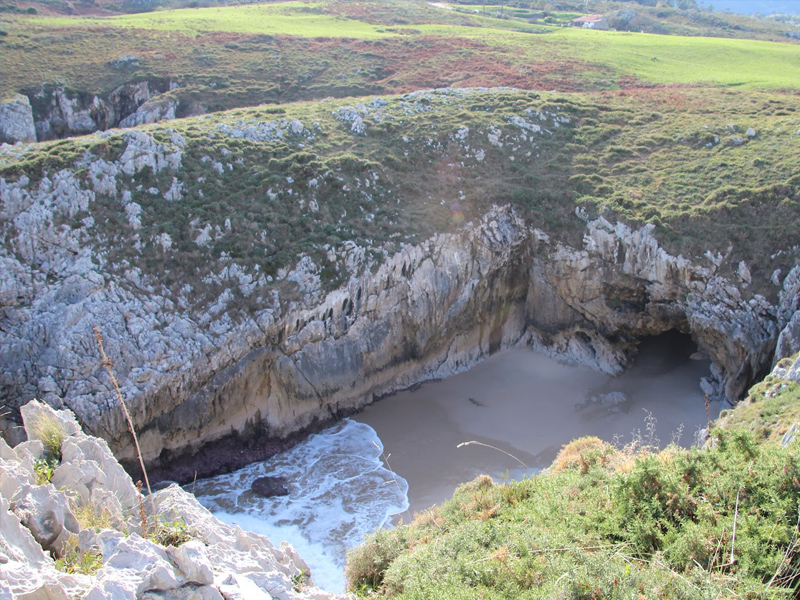
Beaches and coves: Cuevas del Mar and San Antonio
The Cuevas del Mar beach is 1’5 km away from Hotel Rural Ovio. It is included in the landscape that is officially protected because of its peculiar features, given that it has peculiar and original cavities, formed by the erosion of the sea on the walls of the cliffs. This cavernous landscape is the origin of its name.
On the other hand, Playa de San Antonio is separated from Cuevas del Mar by Punta de San Antonio, and is a small cove in the shape of a shell. This beautiful natural beach, on top of its cliff, has the chapel of San Antonio, owned by the Count of Vega de Sella. You can access it walking from Cuevas del Mar or, from Hotel Rural Ovio, after crossing the villages of Oviu and Picones.
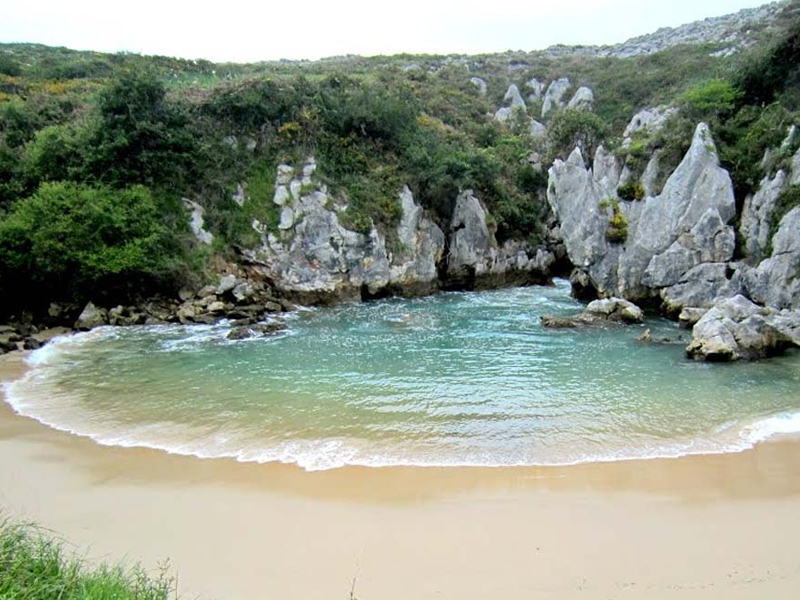
The Gulpiyuri beach
At just 4 km from Hotel Rural Ovio, we find the town named Naves and its Gulpiyuri beach. Declared a natural monument, it is part of the protected landscape of the Asturias coast. It is a small beach located inland, among green meadows. The sea water enters it through a tunnel between the rocks. It is believed that the origin of the beach is a blowhole.
MOUNTAINS AND VALLEYS
PICOS DE EUROPA
Picos de Europa is a group of three massifs: the Western massif or Corni√≥n, the Central massif or the Urrieles, and the Eastern massif or √Āndara.
The human activities that have defined the area since ancient times are livestock, shepherding, forage and hay production, as well as cheese production in several of the regions that are comprised in Picos de Europa, such as Picón, Cabrales, Gamonéu, Liébana and Valdeón.
A very varied fauna inhabits Picos de Europa, among which the wood grouse and the chamois, apart from many birds and a wide variety of flora, such as their valuable beech forests.
Los Picos de Europa
Other trails
- Lakes of Covadonga Trail, through marked trails, whether we follow the fast route crossing the Buferrera or the long route by bordering it.
- Trail from Poncebos to Bulnes, a not marked hiking trail with only 10 km and 3 hours long (intermediate level).
- Vega de Ario, a linear hiking trail of 6h and 15 km (intermediate level, and check the weather forecast in advance). You can spend the night in the Ario Refuge.
Attention: MTB can only be ridden in the paths that are marked as suitable for the transit of motorized vehicles and not on the Cares Trail, the Arcediano Trail, the Urdón Trail and other hiking trails.
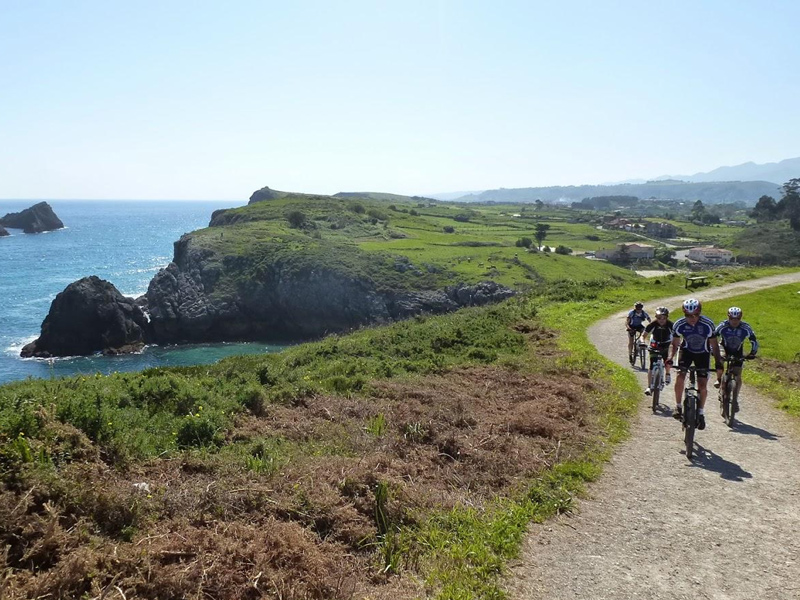
Hiking in Picos de Europa: the Cares Trail
Located in the Picos de Europa National Park, between the towns of Caín and Poncebos, the Cares Trail is one of the most spectacular hiking routes in the area. It is considered one of the most beautiful in Spain and runs through caves, bridges and paths excavated in the rock.
This hiking trail has a wonderful track of about 11 km, 24 km and 6 hours long if you want to complete it.
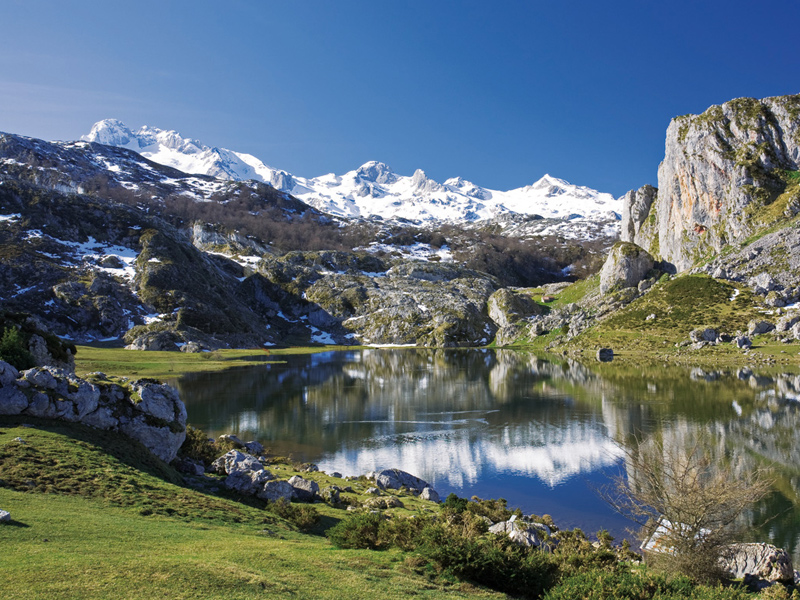
Lakes of Covadonga
Picos de Europa was the first National Park declared in Spain, in 1918, under the name of ‚ÄúMonta√Īa de Covadonga‚ÄĚ, a protected natural area. The Sanctuary of Covadonga is about 8 km from Cangas de On√≠s. At the entrance you will see Santa Cueva, where the patron saint of Asturias appeared to help King Pelayo expel the Muslims.
To reach the Lakes of Covadonga, you will have to climb another 12 km at an altitude of 1100 m, where there are two lakes of glacial origin; the Enol and the Ercina above, both very beautiful. The landscape and exuberant vegetation surround the whole environment, creating one of the most beautiful places in all of Asturias.
Due to the excess of visitors in the tourism peak season, the access to the Lakes of Covadonga is restricted and can only be reached using public transport.
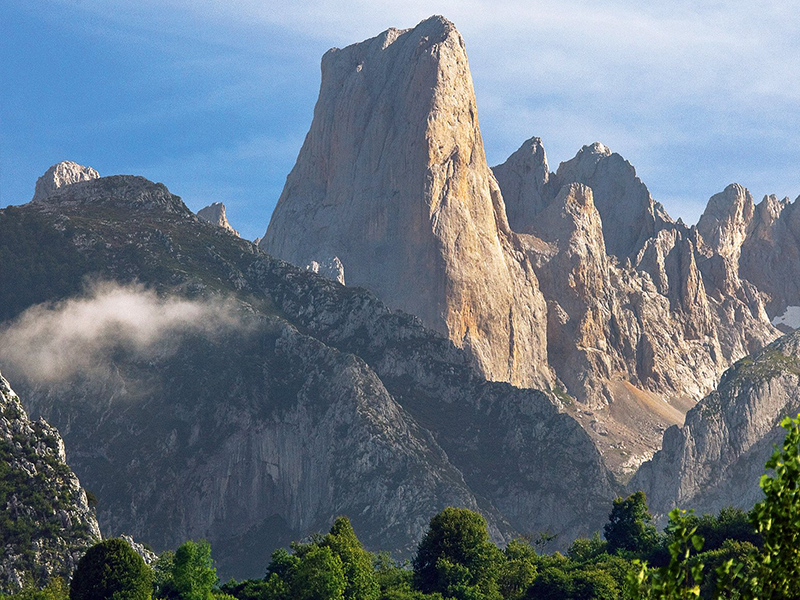
Naranjo de Bulnes or Pico Urriellu
Naranjo de Bulnes, or Pico Urriellu as it is popularly known in Asturias, is a limestone peak located in the Central Massif of Picos de Europa. Oviu is the only spot in the coast where you can see Naranjo de Bulnes from.
If you wish to climb Naranjo de Bulnes, it is 2518 m high, with a 550 m slope on its west side. ¬°A challenge!
ADVENTURE
TOURISM
The surroundings of Nueva de Llanes, where Hotel Rural Ovio is located, is perfect for the adventure tourism. Sea and mountains will allow you to practice many different sports and enjoy your holidays in Asturias in a different way.
Activities for the most adventurous travellers!
Combining paddle surfing (stand up paddle) with caving, making a horseback ride through dreamy landscapes, taking a kayak and enjoying the sea or our lakes… There are countless ways to enjoy adventure sports at the most in Nueva de Llanes.
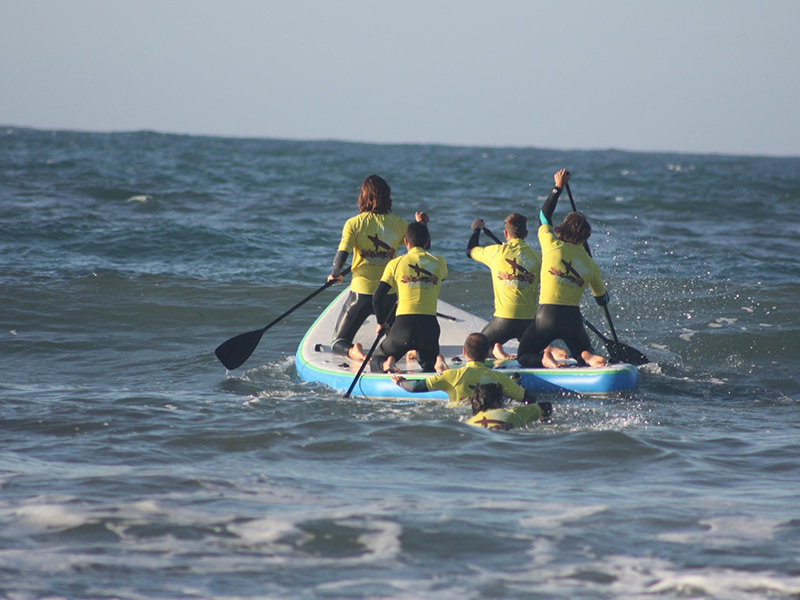
Paddle surf in Llanes (stand up paddle)
Padde surfing (stand up paddle) is the funniest and sportiest way to discover the caves and cliffs in this area of Asturias: on the coast, in mountain lakes and in rivers. A great plan to get to know our incredible landscapes!
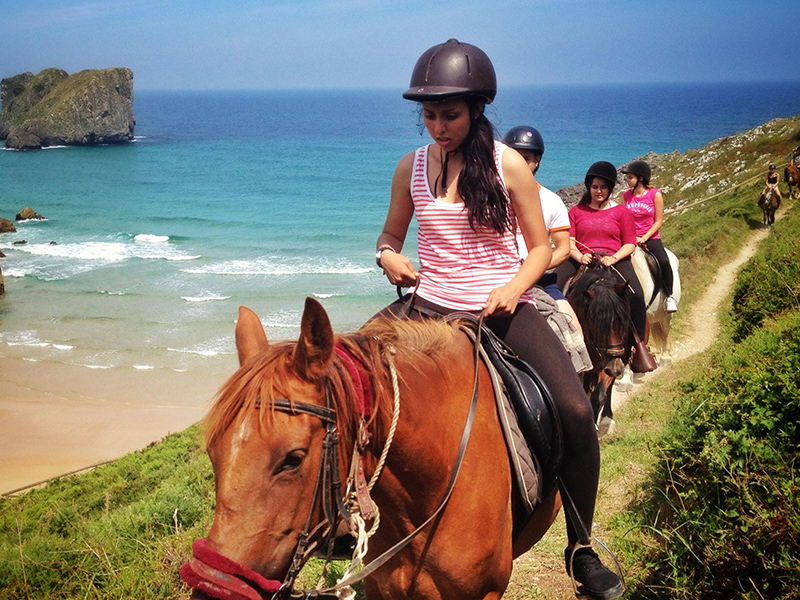
Horseback riding trails
There are several companies that offer horseback riding trails in the area, for example, the Barro-Celorio-Poo trail, very close to Llanes. Ask us for further information!
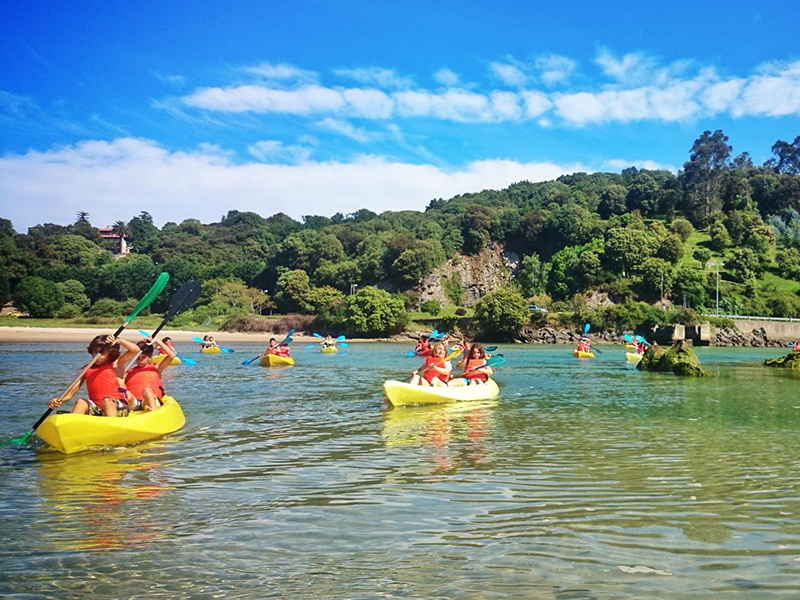
Sea kayak in Llanes
Kayak rentals on the beaches of Poo, Borizo, Toranda, La Franca, Celorio, Ribadesella… Kayak guided routes are available to discover the local beaches, islets and cliffs. A great plan not to be missed!
SO MUCH YET
TO BE DISCOVERED…
Apart from singular beaches surrounded by green sceneries and the infinite natural environment of Picos de Europa, around Nueva de Llanes, from the Hotel Rural Ovio you will be able to discover several charming towns that are very close.
So close to your accommodation….
Very close to Nueva de Llanes you will find several villages with lots of tourist places of interest, amongst them, Llanes and Ribadesella. Both offer the perfect mix of beaches; historical, cultural and art heritage as well as nature and leisure activities.
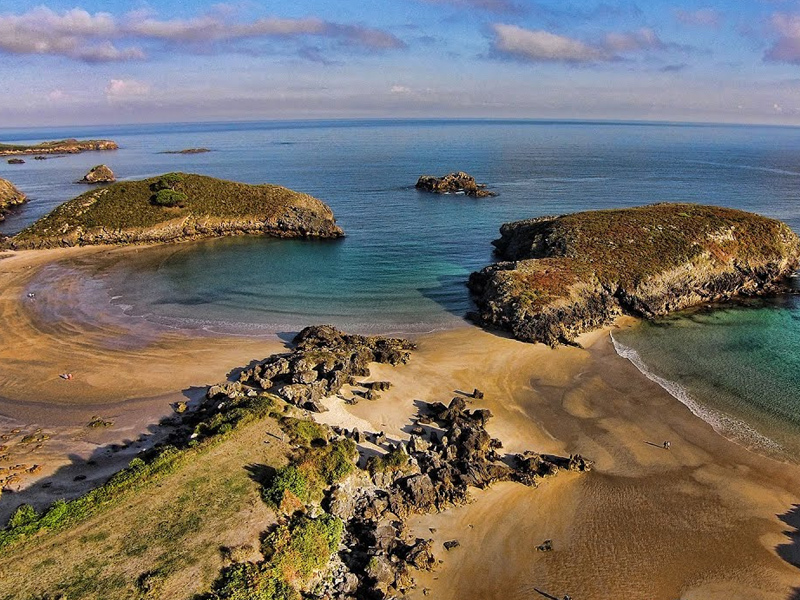
Llanes has everything to become a fascinating destination, whatever your interests are, perhaps thanks to its great history dating back to the 13th century:
- Colonial architecture: palaces and Casonas de Indianos.
- Villa de Llanes, the port and the San Pedro promenade.
- Cubos de la memoria (a unique art piece in the port, made of blocks).
- Camino de Santiago on its stages Bustio-Llanes and Llanes-Ribadesella.
- √ćdolo de Pe√Īa T√ļ (paintings and engravings from the Bronze Age).
- Romanesque Monastery of San Antolín de Bedón.
- Western Asturias Ethnographic Museum.
- Beaches of El Sablón, Toró, Poo.
- Traditions, festivies and gastronomy.
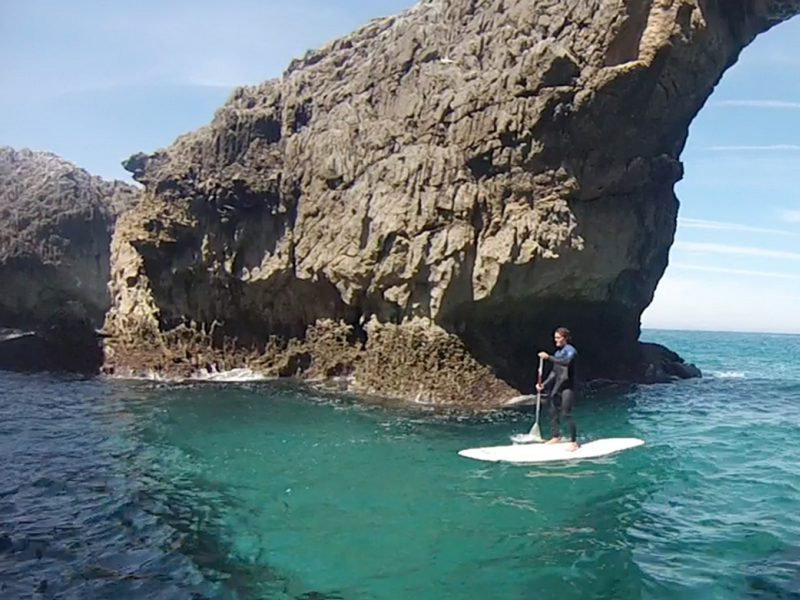
The Sella River and its proximity to the sea have marked the passage of history in Ribadesella, where you will find places of interest such as:
- Historical route of the port.
- Camino de Santiago
- Cuevona de Cuevas (an impressive natural cavity).
- Icnitas or dinosaur footprints, on the cliffs in the village of Tere√Īes.
- Mirador de Guía (Guía viewpoint).
- The Tito Bustillo Cave (UNESCO World Heritage).
- Fishing and seasoning industry.
- Hiking
- Gastronomy: the best from the sea and the mountains, in Ribadesella.
A remark: a special effort has been made to distinguish the Ribadesella dining spots that are suitable for people with celiac disease
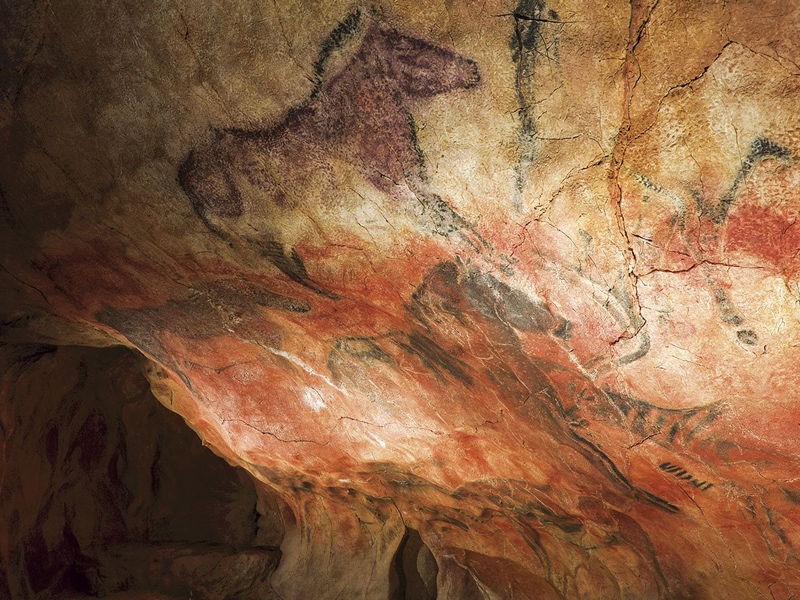
Tito Bustillo Cave
In 1968 a group of speleologists entered the cave and found a set of paintings and engravings on its walls. Since then, they have been studied and there are at least 12 groups of cave art along the galleries of the cavity, which is why the Tito Bustillo Cave is one of the most important Palaeolithic art sites in the world.
It is declared a World Heritage Site by UNESCO, and you can only visit the Main Panel a few months a year, to help its preservation. At 250 m from the Tito Bustillo Cave you will find the Tito Bustillo Cave Art Centre, a museum that shows the Palaeolithic rock art of Asturias.
Camino Ovio, 1, 33592 Nueva, Asturias
hotelovio@gmail.com
985 41 00 05



